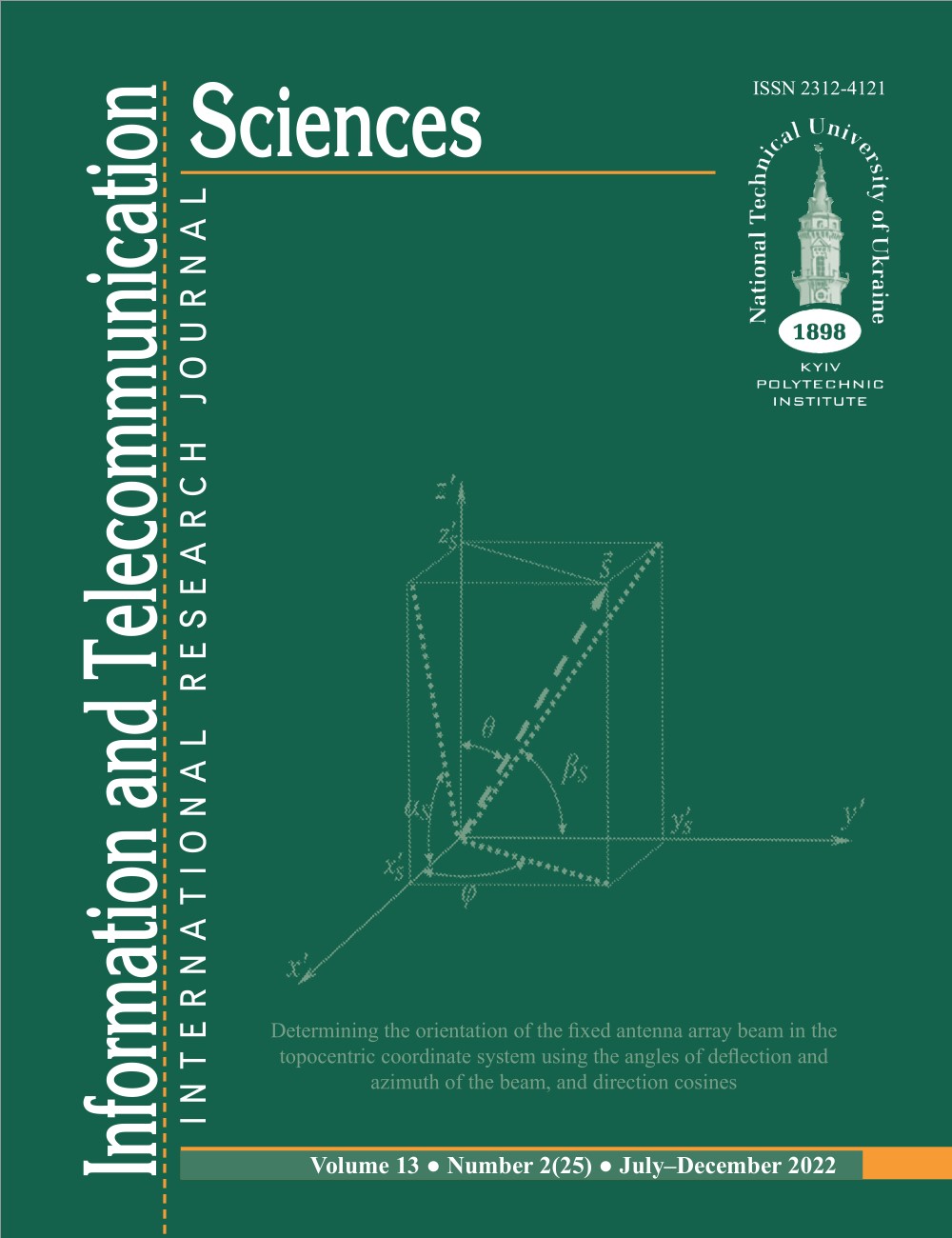DEVELOPMENT OF THE CONCEPT FOR THE COMPUTATIONAL RESOURCES MANAGEMENT SOFTWARE IN THE CUSTOMER SERVICE SYSTEMS
DOI:
https://doi.org/10.20535/2411-2976.22022.26-33Keywords:
information and communication network, dynamic resource allocation, ontology, model, computer system infrastructure, analysis, resources management, QoSAbstract
Background. To date, there is no customer service system that does not involve information and computer systems. One of the most important issues in ensuring the reliability and reliability of such systems is the task of dynamic scaling and providing the required amount of computing resources at any time. This study was focused on the planning and deployment of computing infrastructure that is able to respond to significantly increased volumes of request flows, changes in the dynamics of load intensity, strict requirements for the quality of their service, etc.
Objective. The purpose of the paper is to create a concept of virtual computing space to meet the needs of distributed customer service system, which takes into account the peculiarities of service, the computing node load nature, service quality requirements, and provides energy efficient. Developed models, methods will control the performance of distributed computing infrastructure and flow maintenance processes, reduce downtime of computing resources and provide services to end users at a given level of quality.
Methods. Analysis of the operation of the node load assessment mechanism, which consists in a dynamic change in the intensity of control of the state of function nodes, showed the effectiveness of planning for a group of computing nodes..
Results. The proposed approach to managing a heterogeneous computation environment to improve the efficiency of the service maintenance process in new generation systems is a unified solution for highly loaded distributed systems. The developed concept made it possible to avoid a decrease in the quality of service during surges of congestion and to maintain the indicators of the quality of service at a given level, provided that the resource utilization ratio is kept within the given limits
Conclusions. In summary, a mathematical model of the problem of determining the maximum allowable load volume with a QoS level guarantee for a service node in a heterogeneous telecommunications environment was proposed.
References
Z. N. Rashid, S. R. Zeebaree, and A. Shengul, “Design and Analysis of Proposed Remote Controlling Distributed Parallel Computing System Over the Cloud,” pp. 118–123.
L. M. Haji, R. R. Zebari, S. R. M. Zeebaree, M. A. WAFAA, H. M. Shukur, and O. Alzakholi, “GPUs Impact on Parallel Shared Memory Systems Performance – International Journal of Psychosocial Rehabilitation,” May 22, 2020. https://www.psychosocial.com/article/PR280814/24791/ (accessed May 22, 2020).
Z. Xiao, W. Song, and Q. Chen, “Dynamic Resource Allocation Using Virtual Machines for Cloud Computing Environment,” IEEE Trans. Parallel Distrib. Syst., vol. 24, no. 6, pp. 1107–1117, Jun. 2013, doi: 10.1109/TPDS.2012.283.
N. Harki, A. Ahmed, and L. Haji, “CPU Scheduling Techniques: A Review on Novel Approaches Strategy and Performance Assessment,” J. Appl. Sci. Technol. Trends, vol. 1, no. 2, pp. 48–55, 2020.
Z. N. Rashid, S. R. Zebari, K. H. Sharif, and K. Jacksi, “Distributed Cloud Computing and Distributed Parallel Computing: A Review,” pp. 167–172.
Q. Zhang, Q. Zhu, and R. Boutaba, “Dynamic Resource Allocation for Spot Markets in Cloud Computing Environments,” 2011, pp. 178–185.
S. R. Zeebaree, K. Jacksi, and R. R. Zebari, “Impact analysis of SYN flood DDoS attack on HAProxy and NLB cluster-based web servers,” Indones. J. Electr. Eng. Comput. Sci., vol. 19, no. 1, pp. 510–517, 202
J. W. J. Xue, A. P. Chester, L. He, and S. a. Jarvis, “Dynamic Resource Allocation in Enterprise Systems,” 2008 14th IEEE Int. Conf. Parallel Distrib. Syst., pp. 203–212, 2008.
S. R. Zeebaree, R. R. Zebari, and K. Jacksi, “Performance analysis of IIS10. 0 and Apache2 Cluster-based Web Servers under SYN DDoS Attack,” 2020.
R. R. Zebari, S. R. Zeebaree, K. Jacksi, and H. M. Shukur, “E-Business Requirements For Flexibility And Implementation Enterprise System: A Review.”
O. Alzakholi, L. Haji, H. Shukur, R. Zebari, S. Abas, and M. Sadeeq, “Comparison Among Cloud Technologies and Cloud Performance,” J. Appl. Sci. Technol. Trends, vol. 1, no. 2, pp. 40–47, Apr. 2020, doi: 10.38094/jastt


